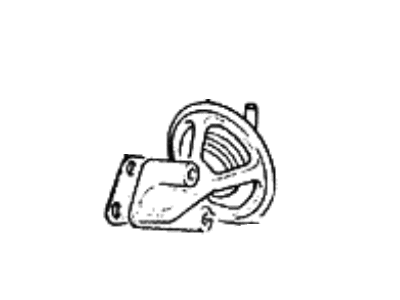×
- Hello
- Login or Register
- Quick Links
- Live Chat
- Track Order
- Parts Availability
- RMA
- Help Center
- Contact Us
- Shop for
- Hyundai Parts
- Hyundai Accessories


My Garage
My Account
Cart
Genuine Hyundai Excel EGR Valve
Emissions EGR Valve- Select Vehicle by Model
- Select Vehicle by VIN
Select Vehicle by Model
orMake
Model
Year
Select Vehicle by VIN
For the most accurate results, select vehicle by your VIN (Vehicle Identification Number).
8 EGR Valves found
Hyundai Excel Valve Assembly-EGR
Part Number: 28450-21370$244.09 MSRP: $342.94You Save: $98.85 (29%)Ships in 1-3 Business DaysHyundai Excel Valve & Sensor Assembly-EGR
Part Number: 28480-24580$283.07 MSRP: $397.71You Save: $114.64 (29%)Ships in 1-3 Business DaysHyundai Excel Valve & Sensor Assembly-EGR
Part Number: 28480-24590$283.07 MSRP: $397.71You Save: $114.64 (29%)Ships in 1-3 Business DaysHyundai Excel Valve Assembly-EGR
Part Number: 28450-24120$89.68 MSRP: $126.00You Save: $36.32 (29%)Ships in 1-3 Business DaysHyundai Excel Valve Assembly-EGR
Part Number: 28450-24510$89.68 MSRP: $126.00You Save: $36.32 (29%)Ships in 1-3 Business DaysHyundai Excel Valve Assembly-EGR
Part Number: 28450-21360$93.39 MSRP: $131.21You Save: $37.82 (29%)Ships in 1-3 Business DaysHyundai Excel Valve Assembly-EGR
Part Number: 28450-21340$105.29 MSRP: $147.94You Save: $42.65 (29%)Ships in 1-3 Business DaysHyundai Excel Valve Assembly-EGR
Part Number: 28450-21350$105.29 MSRP: $147.94You Save: $42.65 (29%)Ships in 1-3 Business Days
Hyundai Excel EGR Valve
If you are looking for affordable high-quality OEM Hyundai Excel EGR Valve, then you have come to the prime place. Our website provides a large amount of genuine Hyundai Excel EGR Valve at unbeatable prices. All our parts come backed with the manufacturer's warranty.
Hyundai Excel EGR Valve Parts Questions & Experts Answers
- Q: How Should the Exhaust Gas Recirculation (EGR) System and EGR Valve Be Inspected and Tested on Hyundai Excel?A:The EGR system eliminates nitrogen oxide from the exhaust of a vehicle by pumping exhaust gas back into the intake manifold through an EGR valve. For 1986 and 1987 models, this EGR flow is regulated by an EGR valve which opens with throttle valve opening, a sub-EGR valve that regulates vacuum based on engine temperature, and a thermo valve that adjusts EGR flow with throttle position. In 1988 and 1989 models, the system works in much the same manner except for not having the sub-EGR valve; in its place is a vacuum regulator valve (VRV) that modulates the vacuum signal of the EGR valve. The '90and up FBC carbureted and fuel-injected models (non-California) use an EGR as described for '88-'89 but all California fuel-injected ones have an EGR temperature sensor and control solenoid as part of its emission control system. Various checks and tests are employed to ascertain if there are problems or not. This includes verifying proper vacuum hose routing; checking to see how well the operation of an egr valve matches specified operating specs at different temperatures; examining components like thermo valves, sub-egr valvies, egr temp sensors, and egr control solenoids in california fuel injected efi systems etc., directly associated with it. At times some elements may fail hence these must be changed accordingly.







